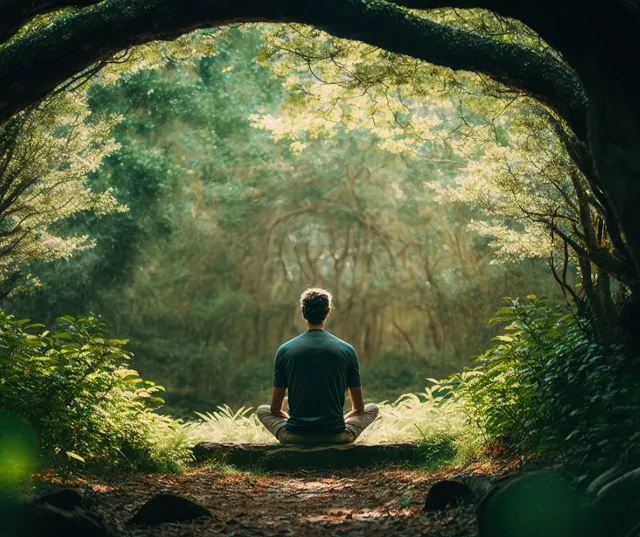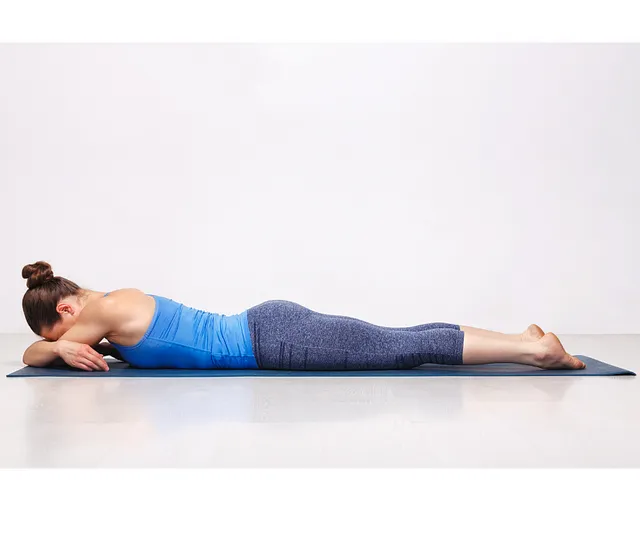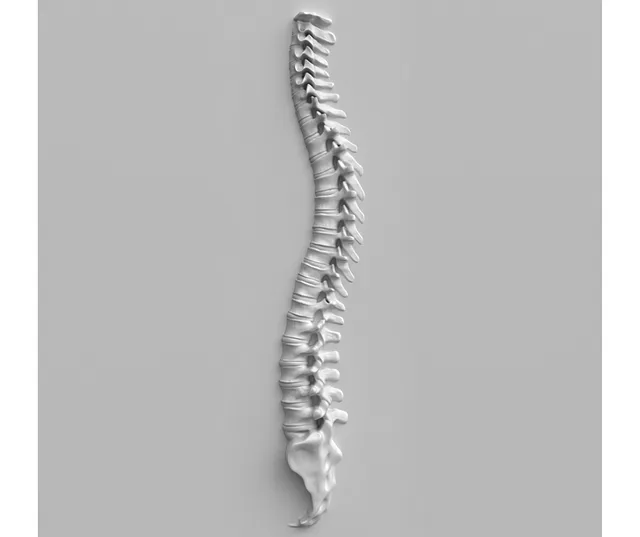
Whenever I talk about meditation, people will tell me that with meditation you should go to a no-thought zone, some people say that you should see some colors, and some others say just sit with closed eyes and you will enter a meditative state when your time comes.
Others do not begin meditation practice at all because they think they will have to leave their families, homes, comforts, professions, and duties–and withdraw to a faraway cave in the Himalayas etc…
Today we will not discuss much on what is meditation or any definition of meditation, but we will see how we can meditate step by step.
Note: this is not what I have designed, it is what my master gave me and which he received from his master.
Lets directly jump into the steps,
Step 1 — Diaphragmatic Breathing — Making sure you are breathing deeper and longer
Step 2: Correct Posture — Just make sure that the spine is straight and there is no discomfort in the legs, back, or neck.
Step 3: Systematic Relaxation — Relaxing the entire body using the body consciousness relaxation technique.
Step 4: Awareness of Breathing — Once the body is relaxed and is in its most comfortable position then moving your awareness to your breath,
Step 5: Use Mantra — Use the word Soham until you are is given a personal mantra.
Now let’s go into every step in detail.
1. Diaphragmatic Breathing
Whenever we think of breathing the first organ that comes to mind is the Lungs. Yes, through the lungs only we breathe, but there is one more organ that plays an important role in our breathing is Diaphragm.
It’s a muscle just below the lungs which is a muscle just underneath the ribs, separating the chest cavity from the abdomen. Ideally, the diaphragm contracts so that we may inhale fully even into the lower lungs. The diaphragm relaxes to push against the lower lungs so that the exhalation from this part of the lungs may be complete.
A child at birth breathes diaphragmatically but later forgets due to the wrong lifestyle. The best way to restore diaphragmatic breathing is by practicing Makarasana or crocodile position.
Makarasana or Crocodile position.

Lie down on your stomach, and keep your legs more than hip distance apart. Keep your feet in whatever position you feel comfortable. Place your elbows in such a way that it will lift your chest off the ground and then place your forehead on the forearms.
Bring your awareness to the breathing process. In this position, it is not possible to do chest breathing. Observe the flow of the breath. Observe the gentle rise and fall of the stomach and the navel area with the gentle and smooth flow of the breath. Let there be no jerks, no breaks, in your breathing. Let it flow like a smooth stream. Let it slow down.
2. Correct Posture
In most of the places where we sit like chair, couch, sofa, car, aeroplane you can’t keep your spine straight because your hips are below the level of your knees. Unfortunately, people think that’s a comfortable posture for them but that posture is a silent killer. So our seating posture should help us to keep our spine straight.
A straight spine is not a straight line.
- It is a slightly S-shaped curve:
- Convex at the lower third part (lumbar vertebrae 1–5)
- Concave at the middle third part (thoracic vertebra 2–12);
- Convex at the upper part of the back (cervical vertebrae 5-thoracic vertebrae 1);
- Straight at the neck (cervical vertebrae 1–4).

The best way to make the spine straight is using a cushion which was taught by my teacher. Just fold a blanket, and make it into a neat and firm cushion, or use a cushion.
Place it only under the hips, with legs or knees on the floor. This will uplift the hips from the ground. Straighten yourself. If there is discomfort anywhere in the back of the neck, you need to experiment with the height of the cushion or folded blanket under the hips. This will make sure you are in the correct position.
3. Relaxation
Once you find a correct meditative posture now it’s time to relax in that posture as much as
possible. To relax we use body-conscious relaxation techniques where we slowly become aware of every body part.
You can do relaxation from toe to head or head to toe like relaxing toes, feet, ankles, calves, knees, thighs, thigh joints, pelvis, abdomen, navel, stomach, heart area, chest, shoulders, shoulder joints, upper arms, elbows, lower arms, wrists, hands, fingers, fingertips; fingertips, fingers, hands, wrists, lower arms, elbows, upper arms, shoulder joints, shoulders, neck joint, neck, chin, jaw, mouth, corners of your mouth, cheeks, nostrils, eyes, eyebrows, forehead.
Once you relax the entire body next step is focusing on the breath.
4. Awareness of Breathing
Let your breath flow, smoothly and evenly, with no jerks, no breaks in the middle of the breath, no
break between the breaths, no sound, no gasping. Become aware of the flow. No break in awareness.
It is also mentioned in that script that if a person can focus twelve breaths, with such unbroken awareness, without any interrupting thoughts will lead you to samadhi. But such twelve breaths are difficult to come by!
Feel the flow and touch of the breaths in the nostrils. Continue to do so, without jerk, without interruption. The awareness of inhalation should immediately merge into the awareness of exhalation and vice versa. The awareness of the exhalation is especially important. If the mind wanders off, because of the usual habits that have been given to it over many, many years, straighten your spine again; relax quickly again; re-establish diaphragmatic breathing; continue with the awareness of the flow and touch of the breath in the nostrils.
5. Introducing a Mantra
A mantra is a simple word or phrase that you silently repeat throughout your practice. For beginners, “Soham” (pronounced so-hum) is a great choice. “So” translates to “I am,” and “ham” translates to “that.” So, with each inhale, silently think “So,” and with each exhale, think “ham.”
The mantra becomes another anchor for your attention, keeping you present in the moment.
Remember, meditation is a practice, not a destination. There will be days when your mind is like a monkey, swinging from thought to thought. Be kind to yourself, and simply keep bringing your attention back to your breath. With consistent practice, you’ll find it easier to quiet your mind, cultivate inner peace, and experience the many benefits meditation offers.
So, take a deep breath, find a comfortable seat, and embark on your own meditation journey. Remember, it’s all about progress, not perfection. Enjoy the process!